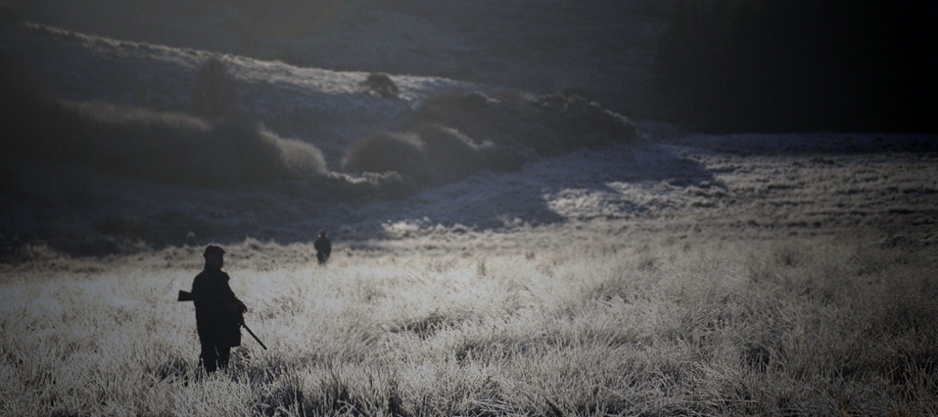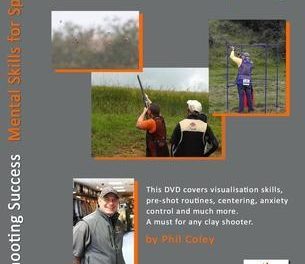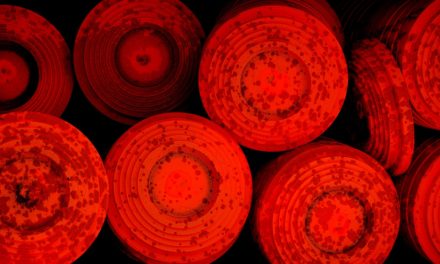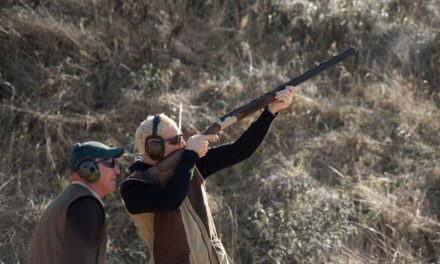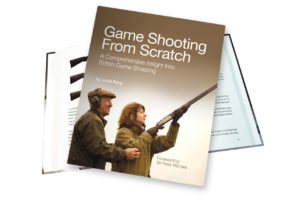 Like many Clay Shooters I have often wondered about Game Shooting, after-all the targets we shoot week in week out are often named after their game counterparts, and modelled on their flights; driven birds, teal, crow and many more. The sport we enjoy on ShootClay has its origins in live shooting, and like many regular shooters I have often thought about game shooting and how it differs from my weekly sporting targets.
Like many Clay Shooters I have often wondered about Game Shooting, after-all the targets we shoot week in week out are often named after their game counterparts, and modelled on their flights; driven birds, teal, crow and many more. The sport we enjoy on ShootClay has its origins in live shooting, and like many regular shooters I have often thought about game shooting and how it differs from my weekly sporting targets.
So when John King sent me a copy of his latest book; Game Shooting From Scratch, I dived in with the express aim of learning about Game Shooting – John has previously published books and DVD’s on learning Clay Shooting and so I was confident that I’d trust his experience in the technical aspects, and I soon learned that John has extensive experience in Game Shooting that he had crammed into this great introductory book.
The book starts with a foreword from Sir Peter Michael – and a short introduction to the book. Chapter One is an introduction to a formal driven game day, with some excellent information about the etiquette and format of the day. It also serves as a great primer on the terminology you’ll read throughout the book, explaining beaters, shoot captains and pickers up. As a complete novice this chapter is really worth devouring as it describes in detail how the day works, and how everyone works together to make a successful day. There is also a great section that describes the types of shoots there are; explaining syndicates, roving syndicates and farm shoots – and the differences between them.
Chapter Two takes the reader through the common species of British Birds, along with the season they can be shot in, and Chapter Three gives a brief general history of Game Shooting. There is an excellent section that explains the history of some of the guns used with lovely photographs of antique and classic shotguns. There is also good information and contact details for the organisations that support game shooting and provide various services including insurance – the BASC, the Countryside Alliance as well as the GWCT who conduct much research into ways of managing the countryside.
Chapter Four is where the technique training kicks in, John walks the reader through the method – similar to the Clay Shooting books previously reviewed – but this time relating the description to pheasants instead of clay targets. The chapter is peppered with clear diagrams explaining the principles. There is a section on safety – which largely aligns to the same rules for Clay Shooting but with the added dimension of field safety, being aware of your location and that of the people working on the shoot, the beaters, pickers-ups and your fellow guns. Next is a short section which talks about the physical movements behind the method and some information about shooting pairs of birds.
John then walks through the method for crossing birds, as well as taking pairs of crossers – outlining the pickup points, kill points and how to build the associated shot pictures. Next is a section that describes some practice that you can put in at home to perfect gun mounts at home, in front of a mirror, useful tips for everyone that participates in the shotgun sports! Finally in Chapter Four John talks about eye dominance and follow through which rounds out an excellent introduction to the techniques required for Game Shooting.
Chapter Five goes a little bit deeper into some of the technique needed – talking about the footwork needed to shoot reactively and adapt to the different birds you will see. As with the previous chapter, simple and effective diagrams explain the footwork changes you can make to adjust for incoming left to right and right to left birds and even the footwork for turning safely to shoot behind. Most of the book and diagrams are focused on over and under shotguns, but John includes an excellent section which describes some extra technique for side by side shooters who are working on hitting rising/crossing birds.
Chapter Six discusses Guns, Clothing and Equipment – I really like Johns approach here, explaining different equipment and their advantages and disadvantages without pushing the reader into one way or the other. Reading the chapter feels like having a trusted advisor as you make decisions and I think this will work for most people learning about the sport. There is also a quick section on insurance, which is valuable and explains good options for making sure you are covered out in the field.
Chapter Seven is back to learning – focusing on High Pheasants and the need to adapt your technique to deal with birds at 100 feet and more. He explains how your sight picture needs to adjust and account for the extra lead, as well as the footwork changes required. There is some extra information and technique for ‘one eye shut’ guns (like your author) and how to cope with high driven birds. There is advice on shooting with your fellow guns as you will no doubt need to do when shooting in a line of experienced guns.
Chapter Eight takes the reader behind the scenes, explaining a lot about how a shoot is setup. He explains release pens, and how a gamekeepers year may be planned out to be ready for the season. There are some great photographs in here, and this is an excellent explanation of how things work on a shoot.
Chapter Nine brings much of the information together with a run through of a driven game day from breakfast to the shoot Captains brief and onto the first drives of the day, elevenses and then subsequent drives that take you up to lunch and then the final drive of the day. It’s an excellent read, as it explains what is happening behind the scenes as you are on your peg or moving between drives.
The final chapter is a quick run through of some delicious looking Game recipes where the reader can prepare and cook some of the day’s trophies. It is a useful reference to have if you are embarking on your first game shooting experiences.
Once again, John King has put together a thoroughly enjoyable and digestible read that provides the reader with an excellent introduction to Game Shooting. The technique sections are well illustrated with clear diagrams, and the chapters that describe the shoot and it’s organisation are filled with descriptive and useful photographs.
I’d thoroughly recommend this book to anyone who wants to learn about Game Shooting, and also as an excellent supplement to anyone who has some experience and wants to brush up on technique.

